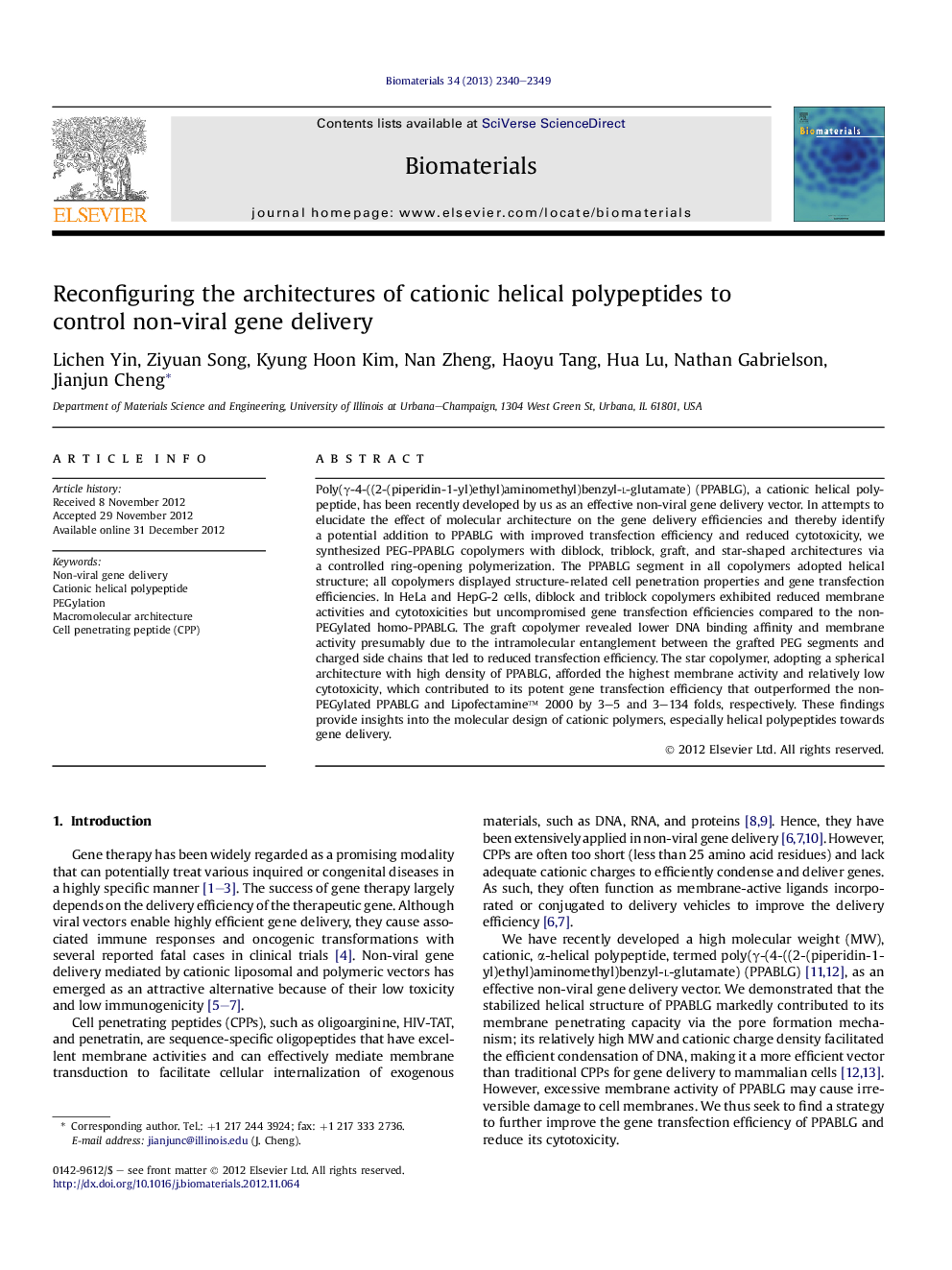| Article ID | Journal | Published Year | Pages | File Type |
|---|---|---|---|---|
| 10228872 | Biomaterials | 2013 | 10 Pages |
Abstract
Poly(γ-4-((2-(piperidin-1-yl)ethyl)aminomethyl)benzyl-l-glutamate) (PPABLG), a cationic helical polypeptide, has been recently developed by us as an effective non-viral gene delivery vector. In attempts to elucidate the effect of molecular architecture on the gene delivery efficiencies and thereby identify a potential addition to PPABLG with improved transfection efficiency and reduced cytotoxicity, we synthesized PEG-PPABLG copolymers with diblock, triblock, graft, and star-shaped architectures via a controlled ring-opening polymerization. The PPABLG segment in all copolymers adopted helical structure; all copolymers displayed structure-related cell penetration properties and gene transfection efficiencies. In HeLa and HepG-2 cells, diblock and triblock copolymers exhibited reduced membrane activities and cytotoxicities but uncompromised gene transfection efficiencies compared to the non-PEGylated homo-PPABLG. The graft copolymer revealed lower DNA binding affinity and membrane activity presumably due to the intramolecular entanglement between the grafted PEG segments and charged side chains that led to reduced transfection efficiency. The star copolymer, adopting a spherical architecture with high density of PPABLG, afforded the highest membrane activity and relatively low cytotoxicity, which contributed to its potent gene transfection efficiency that outperformed the non-PEGylated PPABLG and Lipofectamine⢠2000 by 3-5 and 3-134 folds, respectively. These findings provide insights into the molecular design of cationic polymers, especially helical polypeptides towards gene delivery.
Related Topics
Physical Sciences and Engineering
Chemical Engineering
Bioengineering
Authors
Lichen Yin, Ziyuan Song, Kyung Hoon Kim, Nan Zheng, Haoyu Tang, Hua Lu, Nathan Gabrielson, Jianjun Cheng,
